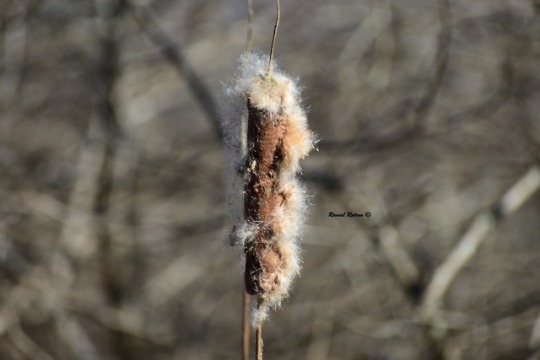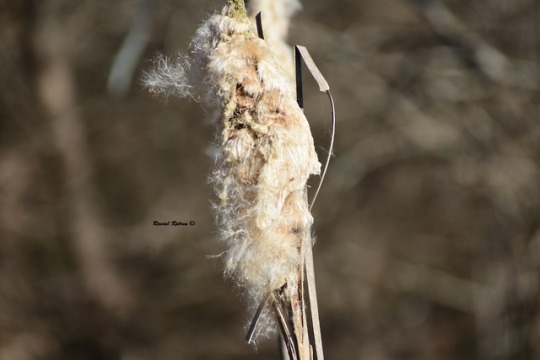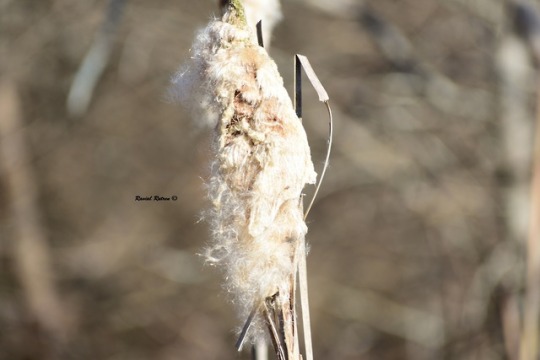#great reedmace
Explore tagged Tumblr posts
Text
Boucheron's Dragonfly Tiara

I was looking for something else and I found out that I missed a very important (to me at least) tiara auction in December. The tiara was made by Boucheron in 1909 using diamonds set in platinum and features dragonflies and bulrushes/reedmace. I love the sense of movement in the design.

The tiara was part of a collection of art nouveau style tiaras made by Boucheron in the early 1900s using diamonds instead of the more unusual materials that art nouveau was known for. According to Geoffrey Munn in Tiaras: A History of Splendour, the combination of traditional materials and non traditional designs did not sell well and most were dismantled. The Great Wave off Kanagawa Tiara and the Flowers in the Rain Tiara were both part of the same collection. I need to make a post with more of them together because they are some of my favorite tiaras.

I didn't even know that this one still existed so it's amazing to see. According to Bukouskis, the tiara was bought in 1956 by Anna-Lisa Björling, wife of opera singer Jussi Björling, and she's wearing is her for the opening night of Don Carlo in 1957.
youtube
The tiara sold for 2,700,000 SEK or 258,672 USD.
#Tiara Talk#tiara auction#Boucheron#tiara#Anna Lisa Bjorling#insect tiara#dragonfly#art nouveau#diamond
237 notes
·
View notes
Photo



I just learned something interesting about the common cattail (Typha latifolia): it has two flowers. The big brown part is the female one and the tip at the top is the male. Got this info thanks to @wildandfree.mb on Instagram. They also taught me that cattails filter toxins and are edible. The more you know.
#common cattail#broadleaf cattail#common bulrush#cat-o'-nine-tails#great reedmace#cumbungi#conservation status: least concern#Plantae#Angiosperms#Monocots#Commelinids#Poales#Typhaceae#Typha#Typha latifolia#Massula latifolia#Typha ambigua#Nikon D3400#nikonphotography#nature photography#photographers on tumblr#Black Bayou Lake National Wildlife Refuge#my flora#flora of Europe#flora of Asia#flora of Africa#flora of North America#flora of South America#plants used in Native American cuisine#plants used in traditional Native American medicine
3 notes
·
View notes
Text
excerpt from Farm by the Shore
Thomas A. Clark
small oats rye bere barley ripe harvest in late summer a shallow ploughing grazing and fallow in rotation
corncrake and corn bunting great yellow bumble bee oystercatcher lapwing golden plover orchid vetch and clover
when no one is home the strawberry roan stands in the rain forlorn
mattress of heather of bracken or eelgrass pillow of cottongrass stuffed with a down of coltsfoot or reedmace floor strewn with bog myrtle
strong rope of heather honeysuckle bridle twisted birch bark tether fish trap of sedge purple moor-grass anchor rope
1 note
·
View note
Photo

Some bullrushes growing at the side of the canal, more correctly known as Great Reedmace.
0 notes
Text
Just the tonic!
I was feeling indifferent about heading outside even though I knew that I needed it. For a few minutes there was a battle in my mind between sofa and views from the window or fresh spring air on my skin and birdsong in my ears? Looking back the winner was obvious!
Jacket zipped, a tap on the left pocket to check presence of sample tubes, and a tap to the right to confirm I'd got a house key with me, and I was off.
House key is a tad misleading as I actually live in a flat. The view from the window is pretty good too as we have an east-facing balcony over the canal basin. Either way, the main thing is that I was now outside. Evening sidelight, the kind that somehow makes you feel warmer due to the subtle hues, and lengthening shadows greeted me as I took to the towpath.
I fell into step and eighties music entered my mind. The music could have been produced on a Casio keyboard but it was all made naturally. My brain was picking out the sounds and synthesising a rhythm. Chirps of the male House Sparrow, perched in the stereotypical spot on the rim of a roof gutter, provided the regular beat. Away to the right my ear caught the melody of a Goldfinch. Initially there were several singing but as I approached they peeled away from the crown of the Whitebeam leaving only one persistent male. Back to the roof of the house and a proud Starling provided accompaniment to the other group members. His silhouette swollen in appearance due to his throat feathers being puffed while he sang from the apex perch.
A road runs in parallel with the canal and towpath. Several cars passed by as I headed to the first bend on my route, binoculars not yet used resting against my hip. My eyes were initially confirming what I thought I had heard. The familiar sound of the House Sparrow doesn't necessarily need a checking glance; however later in the walk I was to use my sight with great reward.
On previous canal walks I have seen bubbles of a hunting Otter breaking on the water surface and I always hope to see this elegant mammal. Not today though. The one hunting mammal I did spot was an either inexperienced or overly confident cat as it dashed unsuccessfully at a Blackbird feeding on the grass.
I continued under a bridge and on to a straight section where I was hoping to see bees. Last March I had watched and filmed a range of insect pollinators here including Buff-tailed Bumblebee, Tawny Mining Bee, and several hoverfly species. Today, there was nothing in flower and no bees.
Along this section of waterway there are a number of narrowboats permanently moored on the other bank. As I walk, towering over me to the right in the near distance is a factory building where I've seen Kestrels before. A brief scan of the roof outline and external steel stairways resulted in a blank on the falcon front. The break in the thick Hawthorn hedge where I'd peeked a view did provide naturalist joy in the form of weathered and tattered remains of a Long-tailed Tit nest. Lichens and natural stitching just about strong enough to still grip the fresh bud laden branch.
In the distance I spied the familiar white of the resident Mute Swan pair. Last year they nested on the bank opposite the balcony. The initial attempt to raise a family was aborted, as they were too close to disturbance from rowdy teenagers armed with stones. Fortunately, a move down the canal proved a good call and they successfully raised four cygnets. The final one of which left them just over a month ago having been gradually pushed from the family by occasional pecks and hisses from the large cob.
Both swans were on the bank edge in the shallows alongside the retail park. As I neared I could see the cob arching his long muscular neck back and forth in the action of a hydraulic digger arm scraping soil. The pen was curled up behind him on a growing mound of decaying stems and leaves. While she peeped from a half-opened eye tucked part under her wing, her partner dragged across more material to elevate the platform where the eggs will eventually be laid. I was now using the binoculars and was able to zoom in closely as the male bird tore at last year's Reedmace growth.
Immediately in front of me stood a Willow coming into flower. I could easily watch the swans still and scanned my eyes across the flowers with fresh anthers standing to attention. A second later and I spotted my fifth queen bumblebee of the year. Days earlier I'd watched a Buff-tailed Bumblebee scan the ground for a new nest site and several others feeding on Willow. Today, it was a queen Tree Bumblebee. I changed the focus on my binoculars and watched her through the lens. She appeared blurry, as I was a tad too close so I stepped back half a yard and she appeared in all her hairy glory. Yellow pollen covered her body as she frantically sought food from the flowers. The sample tubes remained in my pocket, as there was no need for capture and a closer look. The burnt toffee thorax and white-tipped dark abdomen was enough for a clear identification.
I walked on along the canal corridor smiling to myself. The swans were nesting again and bees were on the wing. Coupled with the warm sunshine on my face I could feel the undertones of spring getting stronger.
Occasionally, the mature hedgerow on my right opens for just the length of a few paces allowing a chance to scan the fenced off 'waste' land. The area is far from wasted by local wildlife and always provides something worthwhile in the form of birds, mammals, or insects.
I stood and scanned. Now is a great time of year to fix calls in the mind as resident male birds are staking claim to territories. My ears picked up calls of familiar birds such as Dunnock, Woodpigeon, Blackbird, and Wren. Although the chorus of calls in May is a natural treasure it can be overwhelming for many, myself included, when it comes to picking out the separate species calls. A Magpie landed silently on a telegraph wire in the distance, no call needed as the familiar body shape and long tail provided all the characteristics needed for identification.
My plan, loose plan at that, was to walk about 2 miles to a fixed point and return. However, it's not that often that I stick to a plan on a walk. My senses and mood lead the way with findings dictating the pace. I quickened my step and could feel the motion of my walking boots against the stone surface. A new noise for the day permeated the air and became louder and clearer in my ears. Something inside told me it was a sound I knew and it made me feel excited.
The Hawthorn hedge was thick at this point and it was around 25 metres to the next break in the line. I felt a need to rush but purposefully slowed myself. I know only too well that rushing often results in a failure when observing wildlife. While I walked I fixed my right ear on the sound and tried to process the input. It was getting louder as I came to the hedgerow gap and the quickening "Kee-kee-kee" made me decide it was a bird of prey. Memories of the Australian Outback flooded back to me where I had watched two Kestrels locked together fall from the sky and land at my feet. They were locked so intently on each other that I was merely an obstruction to avoid hitting.
I stopped at the fringe of the hedge flanking me and peered out into the space. An instantly recognisable shape hit my retina and returned as a male Blackbird. In the background a pair of Woodpigeons appeared in view with the characteristic flap-glide-sink-climb flight pattern. The noise came again. Where was it coming from? I was desperate to see the owner of the voice and as always wanted to confirm that my initial conclusion was right. If not right, it's disappointing but all part of the learning curve of the natural world experience.
It seemed like I was watching forever as I raised the binoculars to my face and focusing on a range of habitat features. At first I thought of the Kestrels locked in battle rolling on the ground and I scanned the fringe of the Bramble scrub to no avail. The Blackbird took to the wing and I followed its flight path. Calls became stronger as my head turned seeing the songbird disappear deeper into the scrub. Something mid way up an old Ash tree piqued my interest and I zoomed in with the binoculars. It was a good 50 metres away but I could see that it was a female Kestrel. They were still around and not too far from where I'd seen them last year. But she wasn't calling and the sound continued. The female bird was sitting on a branch on the nearside of the tree and as I watched I listened intently. Calling was coming from a very obvious hollow in the tree trunk. The top of which was snapped out and almost appeared as a chimney on a slant.
She roused her feathers and the mixture of browns near hid her from view with the trunk behind and other branches to the fore. With that she hopped and fluttered a couple of metres and landed on a branch to the left of the cavity. Seconds later the sound changed, I'd worked out that a male must be inside calling to her but I never expected to witness what happened next. He burst from the large dark hole with his sleek plumage caught in the evening sidelight. Instantly recognisable as a male Kestrel his silver head and tail showed in fine condition. The hen bird leant forward, raised her tail, and the male alighted on her back briefly copulating before gliding away chattering momentarily then falling silent. It felt like I hadn't breathed for several minutes as the story had unfolded in front of my eyes. I had found a pair of Kestrels and watched them mate! A first for me.

The thought that only 30 minutes earlier I had had to push myself out of the door entered my mind and I felt a great sense of relief in my decision. I could feel a slight sting in my eyes as happiness literally welled inside of me and I remembered Billy Casper and his strong relationship with Kes. One reason I absolutely love nature is because there is always something new to experience and learn about.
0 notes
Photo

Typha latifolia (Great Reedmace) held by my lovely little Chinese neighbours...
It somehow arrived in our little pond, and is going to take over if I don't keep pulling it out!
0 notes